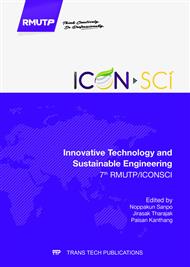p.191
p.195
p.199
p.204
p.208
p.212
p.216
p.220
p.224
Influence of Natural Oil Polyol on Mechanical Properties of Polylactic Acid
Abstract:
The aim of this work was to improve the mechanical properties of polylactic acid (PLA) by natural oil polyol. Castor oil is natural oil polyol used for this work. It was directly extracted from castor seed and without chemical modification. The contents of castor oil were varied from 0 to 10 wt%. The effect of castor oil content on mechanical properties of PLA were evaluated by tensile and impact testings. Differential scanning calorimetry (DSC) and morphology analysis were used for explanation of the result. The result showed that the elongation at break and impact strength of PLA /10 wt% castor oil blend were increased about 108 and 30 % as comparing neat PLA whereas tensile strength tended to decrease about 24 %. The changes in glass transition temperature, crystallinity content and morphology of PLA corresponded well with the result of mechanical properties.
Info:
Periodical:
Pages:
208-211
Citation:
Online since:
June 2017
Authors:
Keywords:
Price:
Сopyright:
© 2017 Trans Tech Publications Ltd. All Rights Reserved
Share:
Citation:


